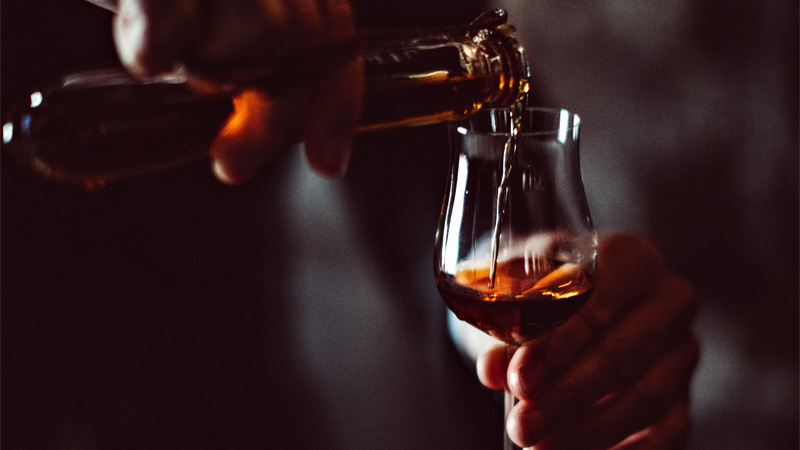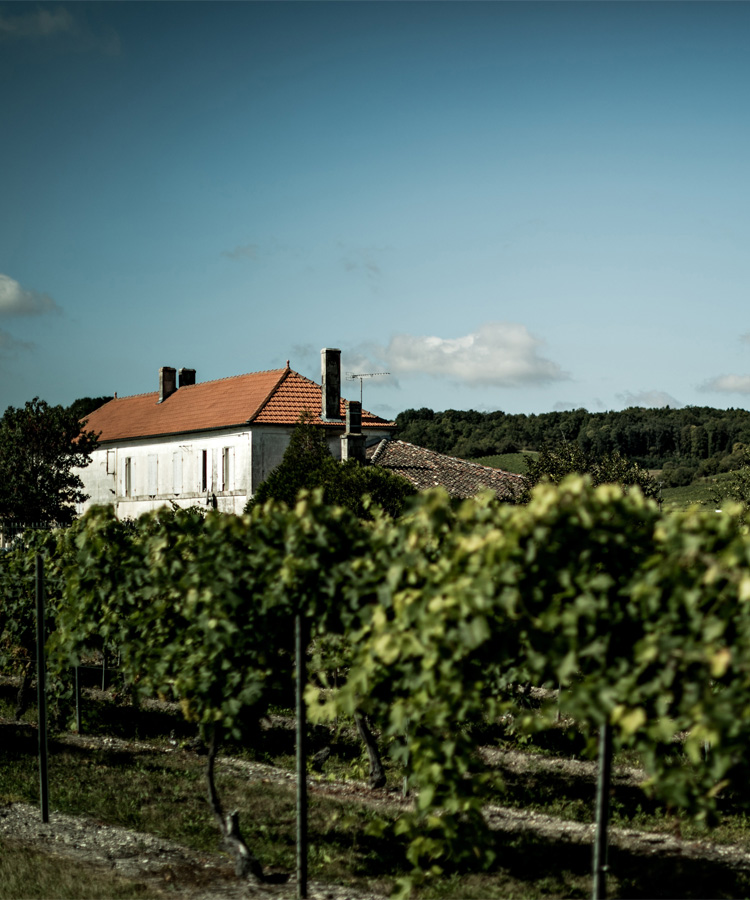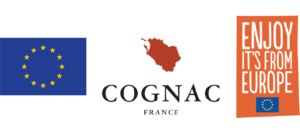
On clay and limestone soil, along the banks of the Charente River in southwestern France, lies Cognac. Here, six high-quality crus— Grande Champagne, Petite Champagne, Fin Bois, Borderies, Bons Bois, and Bois Ordinaires — wrap like rose petals around the center town of Cognac. Here, wine uniquely meets spirit.
As with Champagne and Calvados, Cognac is protected under French law as an Appellation d’Origine Contrôlée (AOC), and under European laws as a Geographical Indication, GI which means that it can only be made in the region of Cognac, and distilled from wine made from white grape varieties chosen for their moderate sugar, high acidity, and aromatics. The most widely planted grape by far is Ugni Blanc, but Colombard, Folle Blanche, Montils, Sémillon, and Folignan are also permitted. The AOC also requires that Cognac be twice-distilled in Charentais copper pots and then aged in oak barrels for a minimum of two years.
Elegant, complex and fragrant, Cognac is as perfect on its own as it is mixed into cocktails, from classics like the Sidecar to more nouveau concoctions. It’s easy to understand why a spirit so unique yet versatile has been enthusiastically adopted by bartenders throughout the U.S.
While the category of brandy is enormous — it can be produced anywhere in the world, from any kind of fruit — Cognac is a very small and incredibly special subset. More and more Americans are getting acquainted with this delicate eau de vie.
“The U.S. is our No. 1 market due in part to the dedicated cocktail professionals across the country who have embraced Cognac,” says Claire Caillaud, director of communications for the Bureau National Interprofessionnel du Cognac (BNIC), the entity in charge of promoting, protecting, and developing the Cognac Geographic Indication and culture. “We are pleased to support them in these challenging times.” Thus, the Cognac Connection campaign was born.
“This initiative is an immersion into the world of Cognac, and the cocktails we love made with this incredibly versatile spirit,” said Lynnette Marrero, co-founder of Speed Rack, a sponsor of the campaign.

A major component of the initiative is the Cognac Connection Challenge, which was created as a way to spotlight, inspire, and support cocktail professionals with a healthy dose of competition, and, of course, prizes.
During the month of August, professional bartenders and mixologists across the country proved their passion for Cognac by entering their creative, original Cognac-based cocktail recipes in the Cognac Connection Challenge, co-sponsored by VinePair and Speed Rack. Judged by industry vanguards and Speed Rack co-founders Ivy Mix and Lynnette Marrero, VinePair staff writer Tim McKirdy, and Kellie Thorn, beverage director of Hugh Acheson Restaurants and certified Cognac educator, each entry was evaluated based on its creativity, taste, technique, and appearance. In addition to fashioning a top-scoring Cognac cocktail, entrants earned points by attending an official Cognac Connection educational webinar and by participating in Instagram Live chats with Speed Rack.
Along with a $1,000 scholarship award, Cognac Connection Cocktail Challenge winners (the competition’s 10 top-scoring participants) will have their cocktail recipes included in a digital recipe book available for download on cognacconnection.com this fall. Additionally, the 10 winners will be invited on a virtual tour of the Cognac region with a local expert.
The Cognac Connection Cocktail Challenge gave bartenders a chance to showcase their skills through taste and presentation, but it also tested their ingenuity. Aside from requiring that Cognac be the primary spirit, the rules of the competition dictated that entries contain no more than six ingredients — including the Cognac and garnish — and stick solely to standard, widely accessible ingredients. The idea is that the winning drinks should be simple to recreate both by professional and at-home bartenders, which will make getting to know Cognac all the easier.
This year’s winners included bartenders from across the country — New York City to New Orleans — and a spectrum of cocktails that played to Cognac’s refined character, as well as its more fruit-forward side.
This article is sponsored by Cognac.

